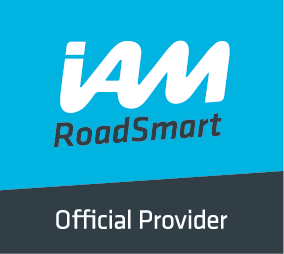Driving Tips from the St. Helens Group
Read our useful driving tips provided by Mark Farnworth, Group Vice-President or from other Group members where stated.
Browse by topic (click to view and then press back arrow)
ABS, Books, 'Automatic' Gearboxes, Dual carriageways, Country driving, Eco driving, Handbrake, Horses, Motorway driving, Observation, Overtaking, Roundabouts, Signalling, Spoken thought, System of Car Control, Terminology, Town Driving, Traffic lights, Vehicle balance
Spoken thought
Spoken Thought or Commentary as some would call it, is enough to make an Associate's hair curl and their palms sweat. Some potential test candidates feel that this is a vital part of the test. It isn't. In fact it isn't even compulsory! Having said this, for those aspiring to get an IAM F1rst (Associates or existing IAM members undergoing a voluntary re-assessment), ‘spoken thought’ is in fact compulsory.
There are great benefits to be gained by learning how to give spoken thought during the Advanced Driver Course since by saying what you see and what you are going to do helps to focus your mind and improves overall learning. Our Observer team considers ‘spoken thought’ to be very important and we encourage Associates to do this. A good amount of spoken thought can never make up for bad driving but in a border line situation between a test pass or fail, spoken thought could help.
Spoken thought should be given in a systematic way. A good way to start is to say where you are, where you are going and the route, what the weather is like and the state of the road. This 'opening' sets the scene for the examiner but more importantly, it gets you talking. Be sensible, however. Don't start talking about the weather if there is a hazard ahead that needs to be dealt with and talked about.
Structure your spoken thought, perhaps by breaking the road up into three areas; far distance, middle distance and behind.
- Far distance features could be roundabouts, traffic lights, or hill crests.
- The middle distance could be parked vehicles, pedestrians or side roads.
- Frequent mirror checks would enable you to comment on what is behind.
A far distance feature soon becomes middle distance and then behind.
Remember that spoken thought is not just about saying what you can see e.g. “traffic lights ahead” or “up ahead I see parked cars on the left”. Good spoken thought should certainly include these factual statements but it is important to convey your thoughts about how you are going to deal with the identified hazards i.e. your planning e.g. “I see two lanes on the approach to the traffic lights and since I want to turn right at the junction I will indicate right to the vehicle behind and move to the right- hand lane on the approach” or “for these parked cars I am slowing down a little, allowing space for car doors to open. I am also watching out for oncoming vehicles and pedestrians walking between the parked cars”.
There is no need for complicated language. If you want to say 'on the left' instead of 'nearside' or 'cars' instead of 'vehicular traffic' then do so. Do not try to copy Police-style ‘commentary’ that you may have heard or, indeed, the style and language presented by Group Observers. Develop your own style and remember, "practise makes perfect".
By Mark Farnworth
Disclaimer: Driving is never a black and white activity, but full of grey areas, therefore neither I nor my fellow Observers in the St Helens & District Group of Advanced Motorists are liable for any consequences you may experience as a result of reading our advice. You are the driver. You should be in control of your vehicle at all times.

